- Administrator
- Albums and Singles
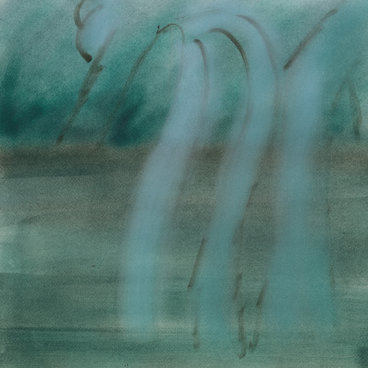
Patience is the debut full-length album by Sante Fe-based artist Theodore Cale Schafer. Alternately murky and narcoleptic and bristling with grit and light, this collection of eight pieces is a delicate play of contrasts. Impressionistic settings unfurl with an unhurried gait, opening with the dreamlike disorientation of "Gold Chain" in which a degraded location recording gives way to a soft web of treated piano motifs. Schafer's compositions are sumptuous yet unfussy, recalling perhaps the concise, vignette-oriented tape works of Andrew Chalk, which seem to prioritize spontaneity and ephemerality over preciousness and decorum. This approach yields substantive results, as on "It's Late", which marries a dolorous, clanging guitar sketch to the sound of change jostling in the pocket of a walker and the laughter of friends or passersby. This is diaristic music - rough-hewn, confessional, and teeming with possibility.
More information can be found here.
Read More
- Administrator
- Albums and Singles

Since its inception in 2011, the Rrose project has spawned over a dozen vinyl EPs on Sandwell District, Stroboscopic Artefacts, Infrastructure, and their own Eaux label as well as three collaborative albums with Bob Ostertag (on Buchla 200E modular synthesizer), Charlemagne Palestine (for two pianos), and Lucy (as Lotus Eater) respectively. A fourth album-length project on Seattle’s Further Records saw Rrose reinterpreting and extending James Tenney’s monolithic 1971 piece "Having Never Written a Note for Percussion" for solo gong. Hymn to Moisture is Rrose's first solo album of original material.
Releases November 8, 2019. More information can be found here.
Read More
- Administrator
- Albums and Singles
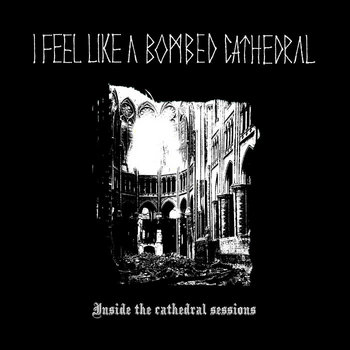
All twelve "Inside the Cathedral" sessions from Season 1 (2019).
These sessions were recorded and filmed live in my music research lab and then broadcast weekly on my YouTube channel.
I FEEL LIKE A BOMBED CATHEDRAL is
Amaury Cambuzat: Electric Guitar with Effects plus Heartbeats.
More information can be found here.
Read More
- Administrator
- Albums and Singles
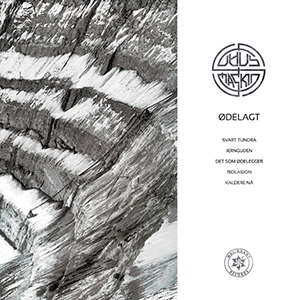 The enigmatic Norweigan duo of D√∏dsmaskin made the decision to intentionally split the sound of √òdelagt into two distinct types on their first vinyl release. The first half showcases their more structured industrial tendencies: surges of noise, harsh abstract rhythms and rumbling bass synth passages. On the other half there is less structure and more flow: melodic passages that drift like a harsher Tangerine Dream and a sound that is dark, but not oppressive. Taken separately both are great, but paired together it makes for an even better release.
The enigmatic Norweigan duo of D√∏dsmaskin made the decision to intentionally split the sound of √òdelagt into two distinct types on their first vinyl release. The first half showcases their more structured industrial tendencies: surges of noise, harsh abstract rhythms and rumbling bass synth passages. On the other half there is less structure and more flow: melodic passages that drift like a harsher Tangerine Dream and a sound that is dark, but not oppressive. Taken separately both are great, but paired together it makes for an even better release.
The first half of Ødelagt clearly emphasizes the duo’s indebtedness to the Cold Meat Industries variant of industrial music:harsh distortion, massive reverb, and an omnipresent sense of evil."Svart Tundra" opens the side via cavernous echoes, nonspecific crunching sounds, and spiny metallic rattles.These distinct sounds are layered together, building a heavy, dark atmosphere that is eventually paired with some distant noise surges.The piece transitions to a simmering grind, full heavy pounding noises, but has a distinct sense of composition and structure to it.
For "Jernguden," the mix is a bit tighter from the onset:reverberated squeaks and noises create a menacing ambience that is fleshed out via some wonderfully heavy bass synthesizer work and heavy delay.There is a bit more of discernible keyboard sounds that are prominent here, giving a slightly more conventional edge throughout.Even with this bit of normalcy, it is still largely an intense, harsh work with an admirable sense of restraint keeping everything in check.There is a multitude of feedback and percussion on "Det Som √òdelegger," heralding something dangerous that is filled out with increased distortion and some machine gun like outbursts.Surprisingly, the mix becomes lighter and more spacious towards the end, resulting in an almost beautiful conclusion.
Over on the other side of the record, the duo works more with lighter, echoing electronics and the occasionally melodic sequence.For "Isolasjon," the structure is looser compared to the first half, and the sound continues to expand and flow throughout the composition.This more fluid structure and ambient opening does not indicate a transition to softness, however, and there are some heavily distorted blasts later on that are noisier than anything on the first side of the record.
On the whole, concluding piece "Kaldere Nå" is the least aggressive work to be had here.Opening with an almost guitar-like bit of melody within the spacious reverb, it is a surprisingly peaceful opening.It might be a lighter start, but things do turn dark, if perhaps less dense overall.There is a shift to the aggressive as it goes on, but kept at bay and far off, keeping the menace in play, even if it is not as overt.
The way in which D√∏dsmaskin split the styles of √òdelagt makes for an excellent way to clarify the complexity of their music, but it does so in a way so that the styles compliment each other.The ambience that appears in the more rhythmic, structured first half is nicely spotlighted on the second side, while those harsher moments that pop up during the more ambient excursions have an even greater impact.It is hard for me to pick a favorite since I am always down with dour, heavy industrial sounds, but the less structured pieces have some great shifts in extremity from calm to harsh and back again.Coupled together, it makes for an exceptionally strong record.
Read More
- Administrator
- Albums and Singles
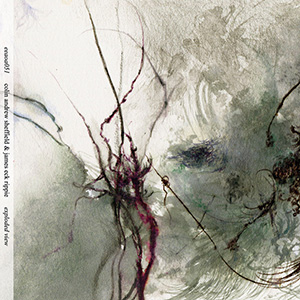 The concept of artists re-purposing existing music and other recorded sounds into an abstract collage or new composition has certainly been done before, and quite often. However, when it is done expertly, such as on Exploded View, it can be an amazing method of work. Colin Andrew Sheffield and James Eck Rippie approach the methodology from two technological extremes: analog turntables and digital samplers. The final product bears little resemblance to anything identifiable, resulting in a piece of music that is entirely their unique work and is captivating regardless of its construction
The concept of artists re-purposing existing music and other recorded sounds into an abstract collage or new composition has certainly been done before, and quite often. However, when it is done expertly, such as on Exploded View, it can be an amazing method of work. Colin Andrew Sheffield and James Eck Rippie approach the methodology from two technological extremes: analog turntables and digital samplers. The final product bears little resemblance to anything identifiable, resulting in a piece of music that is entirely their unique work and is captivating regardless of its construction
The single, 20-minute piece that makes up Exploded View is an astoundingly fast one, rushing by far too quickly due to the amount of variation and sounds Sheffield and Rippie use.Opening with tiny thuds and crackles (my guess would be via the abuse of a record stylus) an excellent sense of texture and space is quickly established.From there additional lo-fi sounds are added:insect swarm chirps, broken speaker static and distortion, etc.Chaotic, yes, but there is a noticeable sense of underlying structure throughout.The duo layers these parts together resulting in some pseudo-rhythmic loops seasoned with the occasionally dense, punishing blast of noise.The closest thing to discernible source material to be had is the occasional fragment of melody that weaves within the crackling and sputtering walls of sound.These mangled symphonies perfectly contrast the roaring noise and unsettling, bleeping electronics that otherwise dominates the recording.
One of the most notable facets of Exploded View is the overall production quality and sound design from Sheffield and Rippie.With all of this activity, harsh and otherwise, the entirety of the mix is enveloping and engaging.The depth of sound the two create is spectacular, making the more delicate moments clearer but the harsher ones as forceful as I would hope.The piece builds to a peak of digital mangling and some painfully piercing, sharp moments that simultaneously are balanced by some melodic, intensely treated sounds within a dense and swirling mix.Eventually layers are stripped away, with the stabbing, loud bits reigned in, and the mix pulled apart.During these more sparse moments the melodic elements shine through most and, by the conclusion of fragmented sounds and clicks, the piece concludes much like it began.
"Dizzying" may be the best adjective to describe Exploded View, because there is so much going on and so many shifts in dynamic and structure that there is very little breathing room to be had.If this was over the course of a full album or CD, it may be simply too much activity to endure, but limited to a tight 20 minutes, it is just perfect.The presentation is impressive too:the disc is in a beautifully designed colorful digipak featuring art by Bea Kwan Lim and on one of those partially transparent Minimax discs, which I am particularly fond of.With beautiful presentation and beautiful sound, Exploded View is another amazing work from Sheffield and Rippie that is just perfectly executed.
Read More
- Administrator
- Albums and Singles
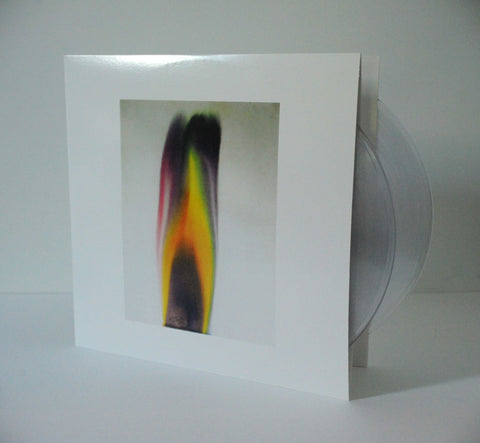
From the original press release:
"Chry-Ptus (1971). Originally two tapes which were to be played simultaneously, with or without synchronization, which does not affect the structure of the work, but creates changes in the game of sub-harmonics and overtones.
Three variations on this piece were performed at the New York Cultural Center in 1971, with variations of amplitude and location modulation as well as synchronization. Realized on the Buchla Synthesizer at the New York University.
The booklet contains a text by painter Paul Jenkins, who also realized the watercolor on the front cover, written on occasion of Radigue's first concert in New York, April 6th, 1971."
"It's with the Buchla that I constructed Chry-Ptus, a piece made up of two tapes with an analogue duration, 22 or 23 minutes, which could be played either simultaneously or with a slight time difference, so as to establish slight variations every time the piece was played. I spent the first months eliminating everything I did not want; I even used a notebook in which I tried to determine a writing system resembling chemical formulae." Eliane Radigue
Out October 11th on Important Records.
Read More
- Administrator
- Albums and Singles

"I can stay up late whenever I want… but other than that, it’s nothing like I thought. I guess I thought I'd know what I'm doing by now… but I know nothing."
Have A Nice Life was formed in a time of Dan's and Tim's life that reflected concerns with depression and suicidal ideation. As the following for the project has grown, and Dan and Tim have aged and faced new life challenges with family and careers, their new album Sea of Worry reflects just that. Dread is the primary theme that is woven throughout Sea of Worry – the dread of aging, children growing up, and an increasingly uncertain future. However, Sea of Worry is Have A Nice Life at the peak of their powers; Dan and Tim's unmistakable chemistry coupled with a propulsive backing band catapults them into the stratosphere. These 7 tracks ebb and flow with noise and melody, and are so well-crafted it's near impossible to get them out of your head. More concise and perhaps more straightforward than their past releases, Have A Nice Life has found new focus and discipline on Sea of Worry and the album is a triumphant addition to their ever-evolving discography.
Sea of Worry will be released via The Flenser on November 8th 2019.
Have A Nice Life was, is, and always will be Dan Barrett and Tim Macuga. Have A Nice Life is also Myke Cameron (bass), Rich Otero (drums, synths, programming), Joe Streeter (guitar), Cody Kestigian (live visuals).
Read More
- Administrator
- Albums and Singles
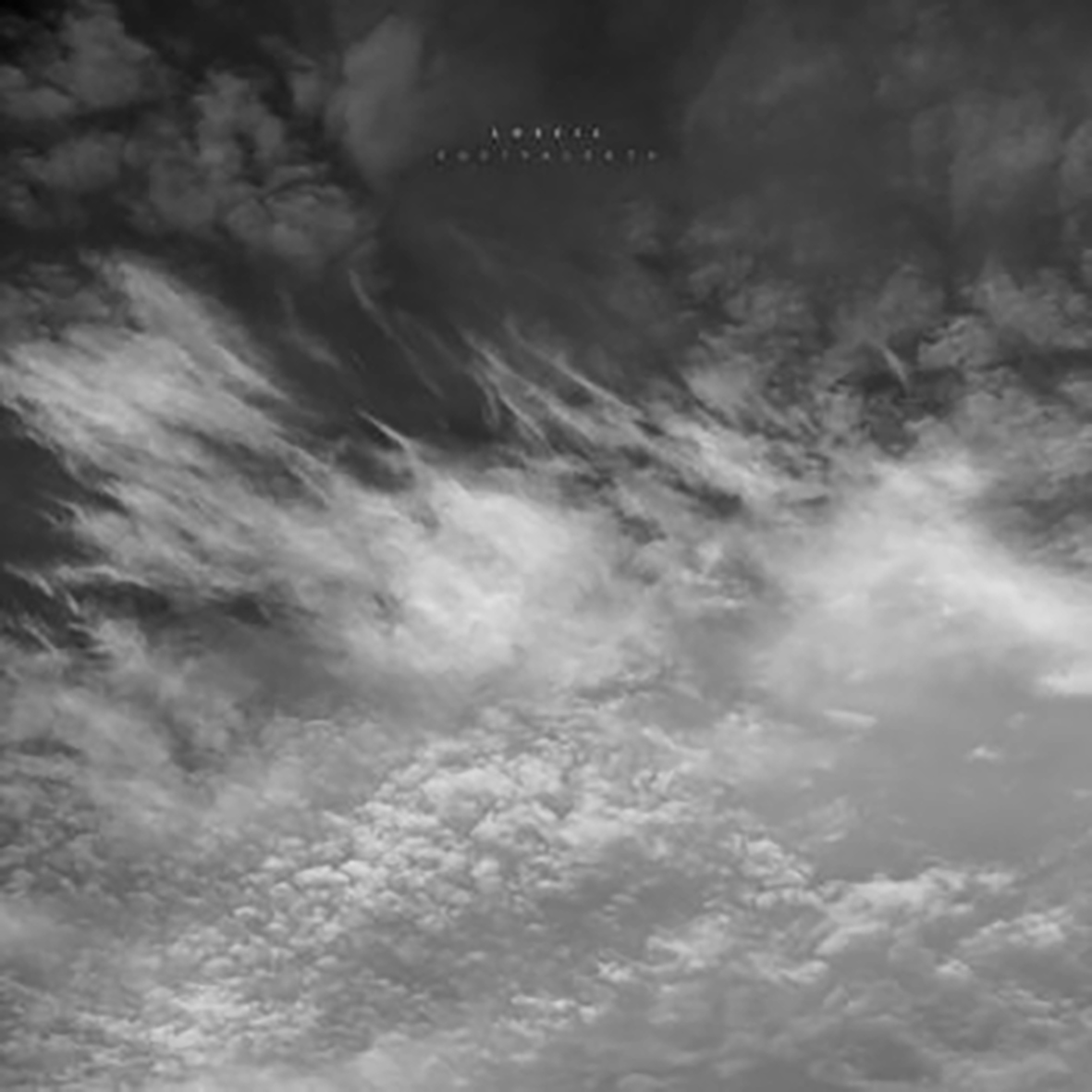 I cannot think of many other artists in the ambient/experimental milieu who are as unwaveringly reliable as Scott Morgan, although his last major release (Monument Builders) admittedly threw some unexpected new elements into the mix. With Equivalents, however, he returns to his comfort zone for yet another lovely suite of lush and elegantly blurred ambient soundscapes. Morgan’s inspiration this time around was Alfred Stieglitz's iconic series of cloud photographs, which could not possibly be less surprising or more apt: the Loscil aesthetic has long been the musical equivalent of a sky full of slow-moving, abstract cloud shapes and Equivalents is an archetypal example of that. Nevertheless, the Loscil aesthetic still continues to evolve in subtle ways, as Morgan eases up a bit on his characteristic melancholy, resulting in one of his warmest and most quietly lovely releases to date. It is possible that Morgan may have learned a thing or two about balancing light and dark from Stieglitz's striking photos, but the real beauty of this album lies in how he masterfully and seamlessly dissolves chords and melodies into gorgeously dreamlike and gently churning abstraction.
I cannot think of many other artists in the ambient/experimental milieu who are as unwaveringly reliable as Scott Morgan, although his last major release (Monument Builders) admittedly threw some unexpected new elements into the mix. With Equivalents, however, he returns to his comfort zone for yet another lovely suite of lush and elegantly blurred ambient soundscapes. Morgan’s inspiration this time around was Alfred Stieglitz's iconic series of cloud photographs, which could not possibly be less surprising or more apt: the Loscil aesthetic has long been the musical equivalent of a sky full of slow-moving, abstract cloud shapes and Equivalents is an archetypal example of that. Nevertheless, the Loscil aesthetic still continues to evolve in subtle ways, as Morgan eases up a bit on his characteristic melancholy, resulting in one of his warmest and most quietly lovely releases to date. It is possible that Morgan may have learned a thing or two about balancing light and dark from Stieglitz's striking photos, but the real beauty of this album lies in how he masterfully and seamlessly dissolves chords and melodies into gorgeously dreamlike and gently churning abstraction.
Loscil is a project that I have always found dangerously easy to take for granted, as Scott Morgan has eternally been devoted to doing one specific thing extremely well and he has now released twelve full-length albums of his blurred and sublime drones.Occasionally, he has tweaked the formula with collaborations or influences from dub-techno or minimalist classical music, but Loscil is exactly what I would play for someone if they asked me what "ambient" sounded like (or if they asked for a definitive example of the classic Kranky aesthetic).Admittedly, Morgan has had some cool conceptual inspirations from time to time, yet his emphasis has always been more upon perfecting the form rather than stretching its boundaries.In at least one way, Morgan is uniquely suited for that path, as his day job is that of sound designer for film and video games.That aspect of his work has always held the strongest appeal for me, as Morgan is a master at transforming chords and melodies into something foggy and indistinct.Admittedly, there are loads of other artists who are similarly keen on blurred and smeared sounds these days, but Morgan tends to be on an entirely different level in that regard and Equivalents is Morgan's culminating achievement: these compositions all feel like they are shrouded in a deep fog, but he brings a physicality to everything that makes me feel like I am immersed in the same fog myself.Equivalents is not an album that seems like it is unfolding in the veiled distance–it is an enveloping and billowing cloudworld populated with obscured and enigmatic streaks of color and emotional depth. 
The album is comprised of eight numbered pieces that all feel a bit like variations on a theme, though the numbers are in non-sequential order and one piece ("Equivalent 7") is a collaborative reworking of an earlier dance score (Morgan is joined by Secret Pyramid's Amir Abbey).Despite the reworking, that earlier piece feels very like the simple foundation that birthed everything else on the album, as it captures Morgan at his most unrepentantly cloudlike.It is not alone in that regard, however, as the second half of the album definitely feels like all of the structures of the first half are dissolving into a churning, hissing, and swirling fog of obscured chords.That is admittedly a very pleasant place to linger once I am there, but the succession of more distinct pieces that open the album is where Equivalents shines the brightest.
The difference between the two halves of the album is an amusingly simple and subtle one though, as the better pieces are merely the ones in which Morgan just added one additional element to his usual palette of smeared and heaving soft-focus drones.In the case of the opening "Equivalent 1," for example, the heart of the peace is a chopped and stuttering organ chord with an erratically shifting pulse.The following "Equivalent 3" actually goes so far as to include a slow-motion, melancholy melody, yet the real beauty of the piece lies in the rhythmic swells of a gorgeously angelic chord.Elsewhere, "Equivalent 6" is similarly heavenly, but goes about it in a completely different way, as a languorously looping and radiant melody unfolds deep inside an enchanted mist.My favorite piece, however, is "Equivalent 5."It deceptively opens with an ascending motif of woozy and wobbling chords, but the chords are unexpectedly eviscerated to become a ghostly, swaying presence in a swooning and seismic crescendo of celestial swells.
It is quite difficult to say quite how Equivalents stacks up against previous Loscil releases, as I view Scott Morgan more as skilled craftsman than as an artist.That is not meant as a critique, as he is very clearly both, but he is definitely someone who can be counted on to put a lot of time, thought, and effort into getting each album exactly right rather than someone who is prone to bold and ambitious new visions.For as long as I can remember, each fresh Loscil album has been exquisitely crafted and Morgan only grows (incrementally) better as the years pass, so the only real variable is how much the direction of a given album resonates with me.In that highly subjective regard, Equivalents delights me more than most other Loscil releases, as it is a bit more understatedly beautiful and emotionally ambiguous than his usual fare: a pervasive sense of deep sadness does not lend itself to heavy-rotation listenability as well as the more nuanced emotional shading found here.If Equivalents has a weakness, it is only that it is heavily frontloaded with all of Morgan's strongest motifs, though it does not necessarily become any less immersive and lovely once all of the prominent themes are dissolved into the fog.In fact, that dynamic trajectory is very likely by design: the more structured and distinctive pieces lure me deep into Equivalents' billowing heaven, but their more overt allure gradually fades away, elegantly bringing the more painterly pleasures of the smeared and dissolving details into focus.
Samples can be found here.
Read More
- Administrator
- Albums and Singles
 Following their last work, the lengthy two CD Circular Time, the double record The Great Unlearning features core Ramleh members Gary Mundy and Anthony Di Franco again staying largely in rock mode, but comparably bringing a bit more of their noise history back into the fray. With an expanded roster of both drummers Stuart Dennison and Martyn Watts, as well as long time collaborator Philip Best and his Consumer Electronics partner Sarah Fröelich, the final product is their most varied, fully realized work to date, blending their guitar focused sounds with the early electronic experimentation from the band's inception.
Following their last work, the lengthy two CD Circular Time, the double record The Great Unlearning features core Ramleh members Gary Mundy and Anthony Di Franco again staying largely in rock mode, but comparably bringing a bit more of their noise history back into the fray. With an expanded roster of both drummers Stuart Dennison and Martyn Watts, as well as long time collaborator Philip Best and his Consumer Electronics partner Sarah Fröelich, the final product is their most varied, fully realized work to date, blending their guitar focused sounds with the early electronic experimentation from the band's inception.
Given how much of their work since 1990's Grudge for Life (excepting 2009's Valediction and Guidelines from 2011) has been guitar-centric, it was not too surprising that most of this set is more in their rock style.Compared to Circular Time, however, a bit of the early power electronic days creep in, with the guitar/bass/drum arrangements being seasoned with some harsh electronic and production.These contributions, largely the result of Best and Fröelich's synth contributions, give an edge that separates The Great Unlearning from their other guitar material, although the balance leans more into music than noise, unlike the structured noise devastation of something like "Valediction VI."
The side-long length of opener "Futureworld" encapsulates the band’s prog and krautrock influences perfectly, with a feel not far removed from their 1995 album Be Careful What You Wish For.Leading off from a sustained guitar drone and fuzzed out bassline, cymbals and synths punctuate what is really a pleasant, hypnotic bit of ambient repetition.Guitar and synth shimmer beautifully over the stripped down rhythms before a bit over the halfway mark, where Watts' drums and Mundy's guitar becomes a bit more forceful.It is a glorious transition, and the entirety of the piece may be one of Ramleh's most beautiful works to date.
For "The Twitch" and "Your Village Has Been Erased", the band locks into their most conventional rock style to date.Both songs recorded as a trio (Dennison/Di Franco/Mundy), the emphasis is on mostly standard production, from the guitar to the drum sounds, with more effects than electronic use.With most of the vocals done with Mundy and Di Franco in unison and with distinct vocal treatment, the overall style is along the lines of the Switch Hitter/Machines of Infinite Joy 10' from 2009.Both are great songs, however, I do tend to prefer Ramleh vocals less aggressive and more in Mundy's self-described "wounded elk" style.
This older feel comes through a bit more on the closing "Natural Causes".The vocals may still be double tracked, but as a whole the song is more depressive, and with the fuzzed out bass and guitar, it feels like a perfect throwback to the bleak psychedelia that colored their entire career."No Music For These Times" also stands strong with its 1970s hard rock tinged sound (replete with cowbell no less!), but the washes of synth and rigid, almost mechanical drumming make it clear that this is Ramleh, and I really enjoyed hearing this less recognized influence on their work to come through.
The more abstract, noisier Ramleh is throughout The Great Unlearning as well."Blood Aurora", with layers of noise synth by Best, Fröelich, and Di Franco cast atop a rudimentary drum machine, puts the emphasis on Mundy’s bleak guitar melodies weaved throughout."Procreation as an Imperialist Act" is similar, with its wet electronics and oddly spacy elements, and the gloomy guitar echoing throughout.These drum machine based compositions are not all that far removed from Di Franco's JFK project, but with the psych elements and Mundy’s guitar instead come together as a nod to the early 80s Ramleh sound (albeit with much better production)."Religious Attack" also features the layered vocals, pummeling electronics, and a pounding drum machine, but the final product is one that is more abstract than overly harsh.
Like 2015's Circular Time, The Great Unlearning is another massive release from Ramleh, though a bit more concise as a double record, rather than a double CD.While Circular Time was definitely a rock album, this one features the band further merging their two styles.On the whole it works as a perfect culmination of the project’s sound, from the ultra low fidelity tapes of the early 1980s, into the dense noise rock of the 1990s to the polished production of today.In just short of 80 minutes, The Great Unlearning manages to summarize everything that has made Ramleh so brilliant for the past four decades, and hopefully a hint as to what will come next from Mundy and Di Franco in the future.
samples:
 
Read More
- Administrator
- Albums and Singles
 After two amazing, although tantalizingly short albums in the past five years (2014's Estuary English and 2015's Dollhouse Songs), the Consumer Electronics trio lineup of founder Philip Best, Sarah Fröelich, and Russell Haswell have decided to go all out on this hour long, double record masterpiece. Turning the thematic focus from the bleakness of austerity, pre-Brexit United Kingdom to the bleakness and violence of Donald Trump's America (where Best and Fröelich emigrated before the recording of this record), Airless Space is another work of fragmented, destroyed electronics and forceful, violent vocals. Besides how strongly it stands as an individual work of art, Airless Space also makes it abundantly clear how much CE has evolved since beginning as a teenaged Best with a shortwave radio, a microphone, and a lot of annoyed people around him.
After two amazing, although tantalizingly short albums in the past five years (2014's Estuary English and 2015's Dollhouse Songs), the Consumer Electronics trio lineup of founder Philip Best, Sarah Fröelich, and Russell Haswell have decided to go all out on this hour long, double record masterpiece. Turning the thematic focus from the bleakness of austerity, pre-Brexit United Kingdom to the bleakness and violence of Donald Trump's America (where Best and Fröelich emigrated before the recording of this record), Airless Space is another work of fragmented, destroyed electronics and forceful, violent vocals. Besides how strongly it stands as an individual work of art, Airless Space also makes it abundantly clear how much CE has evolved since beginning as a teenaged Best with a shortwave radio, a microphone, and a lot of annoyed people around him.
The title of the album draws inspiration from the 1998 short story collection Airless Spaces, by second wave/early radical feminist Shulamith Firestone.The collection was inspired by her time spent involuntarily confined to a psychiatric hospital later in life, shaped by autobiographical elements from her experiences beforehand.The book encapsulated the ills of American society:lack of mental health resources, poverty, social marginalization, and lack of available resources that are still problematic today.This, the ever increasing class divide, rampant misogyny and racism, and just a general unpleasant state of the world make for perfect themes for this always challenging band to tackle.
One notable difference from some of the recent work is the increased role Fröelich has taken on vocals, with her leading most of the nine songs on this record.While her shouting, barked delivery is consistent with what Best has been doing since his latter Whitehouse days, the voice is clearly her own on here.Besides her natural delivery, production work, such as the vocoding on "Body Mistakes" give an additional layer, eventually dissolving her words into a harsh burst of noise.I cannot help but feel that, with her increased role in the band, flirtations with conventional music, and socially critical lyrical content ("Well I see it like this/Men are like apes at sunset/Are you nervous?/You were warned in advance" by Best on "Carnage Mechanics") that the trio are further raising the middle finger to the power electronics bros that have followed Best for decades without ever fully understanding what he was doing and now criticizing latter day CE behind the anonymity of social media.
Although Best has taken a step back, his appearances on the microphone are among his greatest.His spoken word narration of "Carnage Mechanics" is subtle, yet emotionally charged and extremely harrowing from beginning to end.Subtle is not usually a term I would apply to his vocal style, however, and "Locust" is the antithesis of that:a screaming, acid throated rant that may be among the most intense he has ever delivered, and with Fröelich‘s additions and a grinding wall of distorted noise, it is as heavy as anything CE has done since his youthful excursions of the 1980s.
The non-vocal elements of Airless Space are consistent with what the trio has done in recent years:largely thin, broken synthetic beats and sputtering noise bursts arranged into erratic pseudorhythms.With some exceptions, the arrangements are that of brutally deconstructed dance music:the thin kickdrum of "Body Mistakes", the skittering high hat of "Out of It" and cheap snares of "Play Therapy" are all clearly signifiers of electronic music, but with a slightly perverted, deconstructed sensibility to them.It is in the unconventional sequencing and structures that these fairly normal sounds become even more abrasive and uncomfortable.Rather than locking into any semblance of conventional rhythm, the placements of sounds become distressing at best.Even the almost danceable rhythm of the lengthy "Murder of JJ" is mangled by white noise spurts and vocals so that any sort of stability is forcefully removed.
While Philip Best's solo incarnation of Consumer Electronics was consistently amazing during its inception and sporadic releases in the 1990s and 2000s, the recent work with Sarah Fröelich and Russell Haswell has given the project an entirely new life.The varied sonic palette, the more socially conscious lyrical content, and the unrelentingly harsh vocal delivery makes for an intense, utterly unique record that once again proves intensity and disturbing sounds in harsher style do not have to be simple antisocial provocation.Best and Fröelich have been quite busy with their Amphetamine Sulphate publishing company recently and as great as their work there has been, I hope that CE does not fall by the wayside given how each recent record has been more astonishing than the last.
samples:
 
Read More
- Administrator
- Albums and Singles
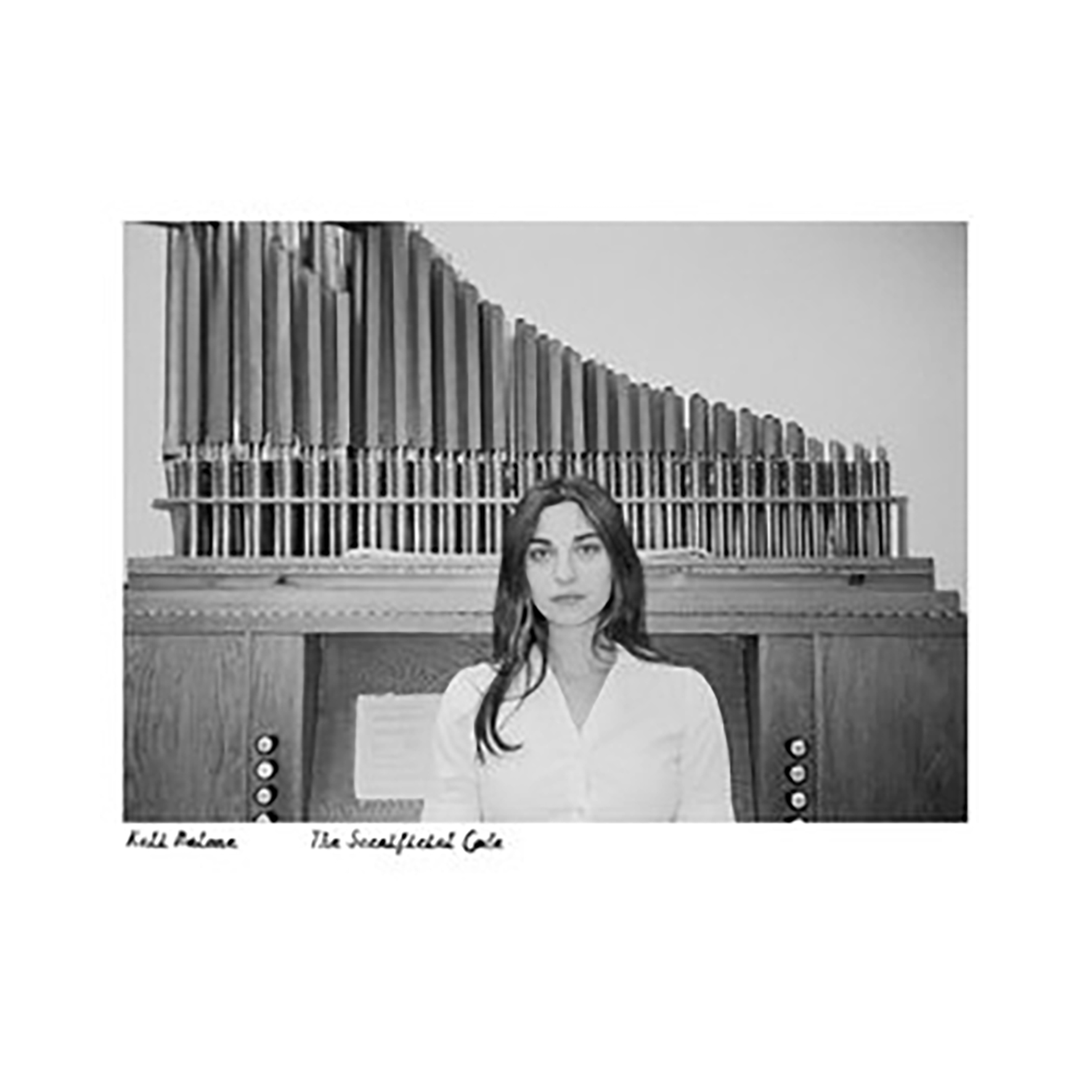 I was recently very surprised to discover that Kali Malone is from Colorado, as she has been quite an uncannily ubiquitous and quietly influential presence in European experimental music circles over the last couple of years. That role is especially remarkable given how her solo work increasingly sounds like it could have been composed a few hundred years ago (a direction largely rooted in a fateful meeting with an organ tuner). This latest release is the culmination of Malone's recent passion for pipe organs, following in the wake of last year's brief yet excellent Organ Dirges 2016-2017 EP (Ascetic House). The two releases are quite similar aesthetically, as Malone remains quite found of slow-moving and meditatively drone-like compositions, but The Sacrificial Code is simultaneously simpler and more ambitious than its concise predecessor.  In fact, this sprawling double album of organ works is an absolutely monolithic statement (and a fitfully mesmerizing one at that). To my ears, it admittedly errs a bit on the side of overwhelming, but The Sacrificial Code is probably exactly the album that longtime fans were hoping Malone would someday release.
I was recently very surprised to discover that Kali Malone is from Colorado, as she has been quite an uncannily ubiquitous and quietly influential presence in European experimental music circles over the last couple of years. That role is especially remarkable given how her solo work increasingly sounds like it could have been composed a few hundred years ago (a direction largely rooted in a fateful meeting with an organ tuner). This latest release is the culmination of Malone's recent passion for pipe organs, following in the wake of last year's brief yet excellent Organ Dirges 2016-2017 EP (Ascetic House). The two releases are quite similar aesthetically, as Malone remains quite found of slow-moving and meditatively drone-like compositions, but The Sacrificial Code is simultaneously simpler and more ambitious than its concise predecessor.  In fact, this sprawling double album of organ works is an absolutely monolithic statement (and a fitfully mesmerizing one at that). To my ears, it admittedly errs a bit on the side of overwhelming, but The Sacrificial Code is probably exactly the album that longtime fans were hoping Malone would someday release.
Kali Malone's brief career has been quite an improbable and interesting series of bold decisions and chance meetings.The most significant event, however, was her decision to move to Sweden as a teenager soon after meeting Ellen Arkbro at a show in NYC.Once there, Malone was quickly won over by thriving artist communities like Fylkingen and resources like Stockholm's Elektronmusikstudion (EMS) and threw herself wholeheartedly into carving out her own role.In fact, I knew about the label that Malone co-founded (XKatedral) months before I even knew anything about her own work.Also of note: Malone was a classically trained vocalist and sometimes guitarist before switching hemispheres, but she has since become known primarily as a synth and organ composer (though her early tapes still feature some guitar).In keeping with that inscrutable and enigmatic trajectory, her first album was composed for an unconventional string ensemble enhanced by gongs, sine waves, and tapes.Consequently, it is fair to say that each new Kali Malone release is kind of a surprise, as she seems to be in a continual state of restless evolution and reinvention.There is one notable constant though: Malone is extremely interested in unusual and precise tunings and that goes a long way towards explaining how she wound up making an album like The Sacrificial Code.If she used an unusual tuning for this particular album, she kept it to herself, but she is an apprentice organ tuner who has employed Just Intonation in the past (and her 2016 collaboration with Caterina Barbieri & Ellen Arkbro was composed for guitars "united in the pythagorean and septimal region of the harmonic spectrum."In short, Malone is an artist with a deep understanding of how frequencies interact.
When I listen to The Sacrificial Code casually, however, it sounds like a very straightforward (if anachronistic) album of simple organ hymns.In fact, there is almost nothing on this release that would sound at all out of place at an organ mass at a normal Catholic church, which makes it a bizarrely backwards-looking and traditional album on its face.It is hard to say how much of that elegiac and "religious" tone was intended and how much of it stems from the constraints of Malone's chosen instrument and the features that led her to choose it in the first place.The song titles certainly suggest the former was a significant force, but Malone was more explicit in her intention to "flow against the grain of the prevailing musical hegemony." For one, she purposely close-mic’d the organ to eliminate natural reverb.Also, she notes that the pieces were "compositionally stripped of gestural adornments and spontaneous expressive impulse" and that she was attempting to achieve "transcendence through self-restraint."
That rigorously restrained and stripped-down approach is the big caveat with The Sacrificial Code, as many of Malone's compositions are too austere to make a strong impression melodically, though the intertwined and ascending themes of the title piece are quite lovely, as are some of the rich harmonies of "Litanic Cloth Wrung."Also, the album is padded out a bit with live versions of "The Sacrificial Code" and two pieces from Organ Dirges.All of that suggests that Malone hubristically attempted to stretch a modest batch of good ideas across four full sides of vinyl (or three CDs), but my opinion changed dramatically when I listened to the album on headphones: The Sacrificial Code is essentially two very different albums masquerading as just one.On an overt level, it is a likably meditative (if unremarkable) suite of minimalist organ hymns, but closer listening reveals a stealthily concealed noise/sound art album hiding amidst the sustained drones and overlapping harmonies.The latter is what makes this album a fascinating achievement, as Malone cultivates a complex and vibrantly shifting feast of oscillations that puts her in roughly the same league as folks like Eliane Radigue and Catherine Christer Hennix.While I now mostly view the melodies and chord progressions as a devious smoke screen that distracts from the real action in the details, I am quite struck by how seamlessly and ingeniously Malone was able to achieve two very different ends at once: she sneakily made a fine experimental music album, yet also made a bold conceptual statement about the value of simplicity and directness.
Viewed in that light, almost everything about The Sacrificial Code makes perfect sense and leads me to believe that Kali Malone might be some kind of visionary or genius (albeit one who is very prone to understatement and subtlety).I still think the album is overlong, but the lesser pieces became considerably more compelling once I grasped that everything Malone played was likely chosen to feed the cloud of overtones and oscillations that remained in its wake. The overall effect is akin to gazing at a pleasing painting, then looking at an X-ray of the same painting and being utterly dazzled by the depth and intricacy of a completely different image hiding behind the surface.Needless to say, that is quite a cool trick and I cannot think of any other artist who has done it this skillfully.As such, The Sacrificial Code occupies a curious place for me, as it is an imperfect album that is nevertheless a perfect and powerful statement of intent.If I had never heard it, I would probably still be following Malone's career and occasionally enjoying an album or two, but this album is the one that finally awakened my ears to the frequency sorcery that is the true heart of her work.I suppose that makes The Sacrificial Code a landmark album of sorts, as it is a high profile release that will likely draw in a lot of curious new listeners and it captures Malone at her most focused and aesthetically distinctive.If those new listeners take the time to get attuned to Malone's frequency, they will not be disappointed: The Sacrificial Code is strong evidence that Kali Malone is one of the most promising and inventive composers of her generation.
Samples can be found here.
Read More

